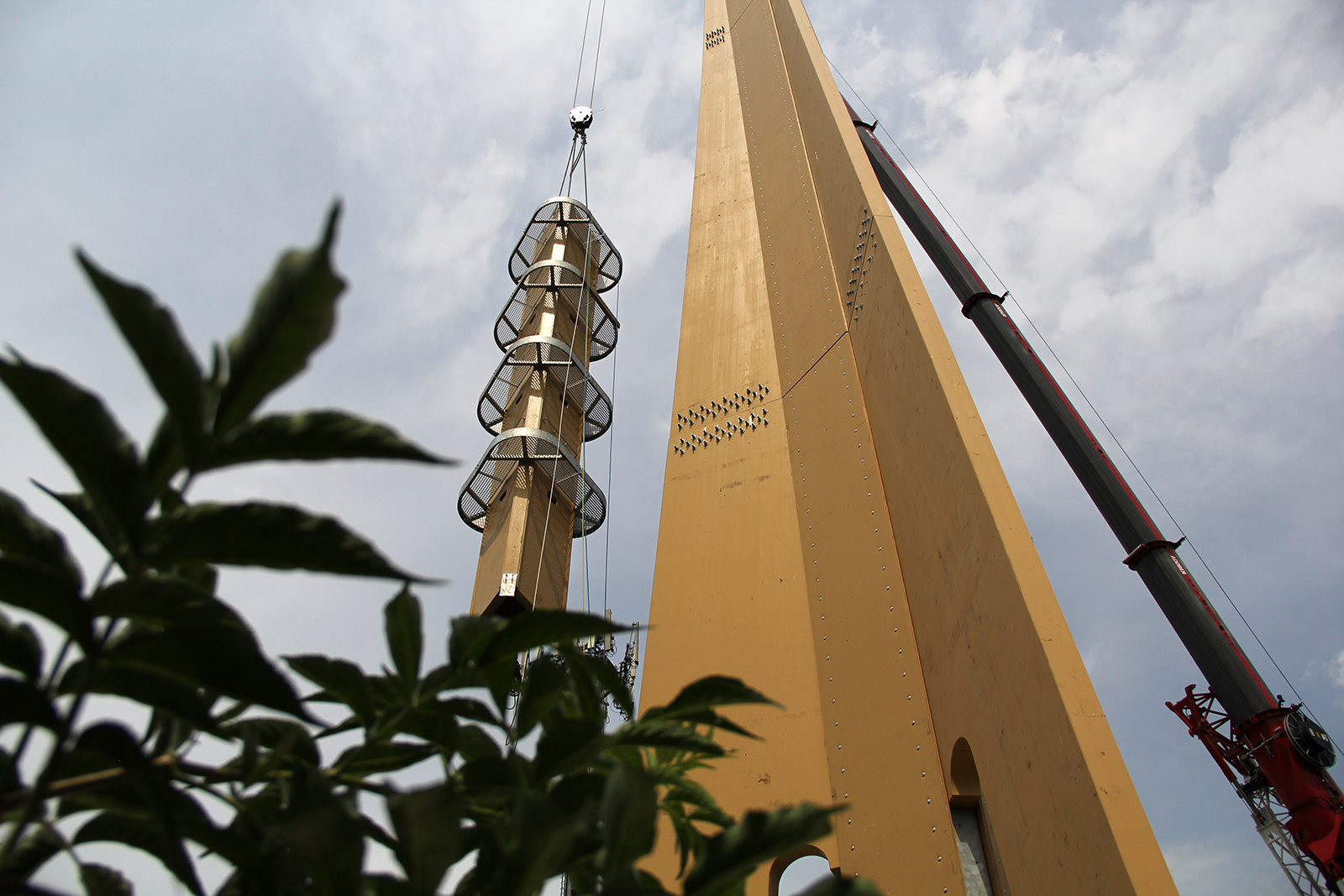
In the near future, tens of thousands of new telecommunication towers will be constructed in Europe. Towers using wooden structures are in demand, especially for sites with landscape values.
In Milan in the north of Italy, motorists are greeted by an unusual sight next to a busy autostrada. The wooden-structured telecoms tower is the first in Italy. It ensures coverage for mobile phones and emergency calls.
The 40-metre tower was erected last summer beside a local conservation area to replace an earlier tower constructed of steel.
’It’s our duty to come up with materials that reduce environmental impact and are more harmonious with the landscape. Glued laminated timber is an excellent choice for creating a more sustainable environment,’ said Giovanni Ferigo, CEO of INWIT, Italy’s largest tower operator, in September.

2020s are a time of blending towers in with landscape
The telecoms tower erected in Northern Italy is manufactured by the EcoTelligent company located in Finland. The company has found wooden-structured towers to be in particular demand for places where towers with steel or concrete structures are no longer granted building permits.
’In areas with single-family dwellings, for example, the residents are opposed to conventional towers. National parks can’t operate without telecommunications, but the towers must have a more natural look that blends in with the surroundings,’ says Gyöngyi Mátray, CEO of EcoTelligent.

She believes that in the coming years, more and more sites will be considered to possess sensitive landscape values, parallel to new towers and base stations being built.
’Wooden-structured towers have the advantage of being widely accepted by the general public. People feel that they are entitled to have access to telecommunication services, but equally to a pleasant living environment.’
Thousands of new towers with 5G
Mátray says that tens of thousands of new telecoms towers will be constructed in Europe in the next few years. This surge in construction is caused, above all, by the need to prepare for the coming of 5G services.
The 5G technology provides faster ICT connections and shorter response times for network connections. However, this will require shorter distances between base stations, as well as a significant increase in their number.
’The faster and more reliable we want our wireless connections to be, the denser the network of base stations must be. A radio signal providing a fast connection does not carry very far,’ says Mátray on the properties of the 5G network.

Demand for new towers is also increased by the fact that some existing towers no longer meet current requirements. Towers today must be able to carry many more devices than before. This means a sharp increase in the weight that the tower must be able to hold up.
’Way back in the 1990s no one could have predicted the sort of requirements that towers must meet in the 2020s. Neither about their preferred locations nor their size. Old towers are often doomed to demolition as several new ones are built in the vicinity of existing towers.’
Wooden structure is competitive
Mátray points out that even the technical properties of wooden-structured towers are competitive in comparison to steel and concrete towers. In particular, she stresses that rigid glulam is highly suitable for use in towers.
’Being rigid, the structure has a better load-bearing capacity. Towers with a high load-bearing capacity are in demand in Central Europe, where settlements are dense and a considerable amount of base station equipment must be installed in the towers,’ says Mátray.
According to Mátray, the price paid by the customer for a wooden-structured tower is about the same as for conventional towers.
’If you compare steel or concrete towers with a wooden-structured tower of the same load-bearing capacity, you’ll see no difference in price. This means that when deciding about the purchase, factors like carbon sequestering, visual appearance and general acceptability will receive more weight.’
Wooden-structured towers have been developed before, in the UK, Germany and Italy, for example. However, Mátray says these have remained experimental projects, because the raw material used was not suitable for a tall and slender structure.
EcoTelligent has opted for something else, making the wooden parts of its Ecopol towers out of extremely rigid glulam and laminated veneer lumber.
’Many are still not familiar with industrially manufactured engineered wood products, and design know-how has also been uneven in quality,’ Mátray points out.
One tower in a thousand
EcoTelligent’s telecoms towers are made of 10-metre modules raised on top of a concrete plinth. Thanks to the hollow structure, cables, connection boxes and other equipment are protected by the tower wall from weather and vandalism.
Despite the rapid growth of the tower market, Mátray’s company does not simply rely on accumulating an order backlog of thousands of new towers. As a pioneer in its field, the company has even had to battle against preconceived ideas.
’When you calculate future market shares of wooden-structured towers, a good rule of thumb is one per mille.’
The company is not planning to provide everybody with everything; rather, it looks for customers whose values are compatible with wood construction.
’Telecoms companies and cities that want to participate in curbing climate change and strive for carbon neutrality can select the infrastructure that matches these goals. As for our customers, we’re not pushing low-carbon on them; it’s that they require it from us,’ says the CEO.
